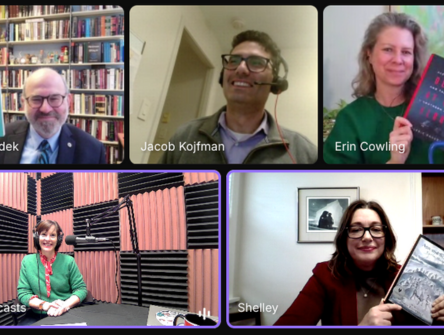A pathway for climate change litigation in Canada
The Supreme Court of Canada has handed down two rulings clarifying how regulatory bodies can fulfill the Crown’s duty to consult

Earlier this summer the Supreme Court of Canada handed down two rulings clarifying how regulatory bodies, such as the National Energy Board, can fulfill the Crown’s duty to consult. The Clyde River and Chippewas of the Thames First Nation rulings are noteworthy in that the top court has recognized that evaluating cumulative effects of a proposed project and its impact on existing aboriginal and treaty rights can inform the scope of that duty. That raises the question of the scope of the duty to consult include giving proper consideration to the impacts of a project on the climate.
Climate change litigation has yet to reach the Supreme Court, but it has made headway in a growing number of jurisdictions, namely in Norway, Pakistan, the United States and the Philippines. And now our top court appears to have offered a pathway for similar litigation in Canada.
What should the NEB do, for example, with an inter-provincial pipeline that would increase greenhouse gas emissions, shifting the migratory patterns of caribou? Following the Chippewas decision, the NEB might have to evaluate the environmental impacts related to shifting caribou distribution as well as seriously consider the importance of that mammal’s importance on the rights, cultural tradition and diets of Aboriginal people. The SCC, in explaining why established rights to hunt and harvest mammals was related to the spiritual, cultural and economic well-being of the Inuit people of Clyde River, cited the Nunavut Court of Justice:
The Inuit right which is of concern in this matter is the right to harvest marine mammals…But the inability to harvest marine mammals would impact more than . . . just the diet of Inuit. The cultural tradition of sharing country food with others in the community would be lost. The opportunity to make traditional clothing would be impacted. The opportunity to participate in the hunt, an activity which is fundamental to being Inuk, would be lost. The Inuit right which is at stake is of high significance...
The NEB should also be evaluating the project’s cumulative effects. As Krista Nerland, Matt McPherson and Lorraine Land, associates at Olthius, Kleer and Townshend write:
The Court said that these cumulative impacts are part of the picture. Even though the focus of the duty to consult is not on “historical grievances,” it may be impossible to understand the seriousness of the impact of a project without considering this larger context of ongoing and cumulative effects. These effects can properly inform the scope of the duty to consult. For Indigenous groups whose territories have been traversed by pipelines for many years, this offers some foothold for broader recognition of the serious cumulative effects that typically arise.
So, could a NEB approval be challenged as violation of s. 35? A group of researchers writing in the Western Journal of Legal Studies, have argued that such a challenge is viable, though they caution that effective remedies would be hard to assess:
The duty to consult may prove useful as a legal tool to challenge climate change policy. A duty to consult claim has a relatively lower causality threshold than that required for a finding of a section 7 or section 35 rights violation. The impact on rights need only be possible not concretely proven. As such, an argument involving climate change policy and impacts is most likely to succeed in the context of a duty to consult. The drawback of this approach, at least with respect to climate change, is that the duty to consult does not necessarily entail equally effective remedies. If any such duties found to exist with respect to government policy on greenhouse gas emission there is no requirement for proportionality analysis to justify government action demonstrably infringing proven rights. The strength of the remedy would depend on the strength of the causal claims.


